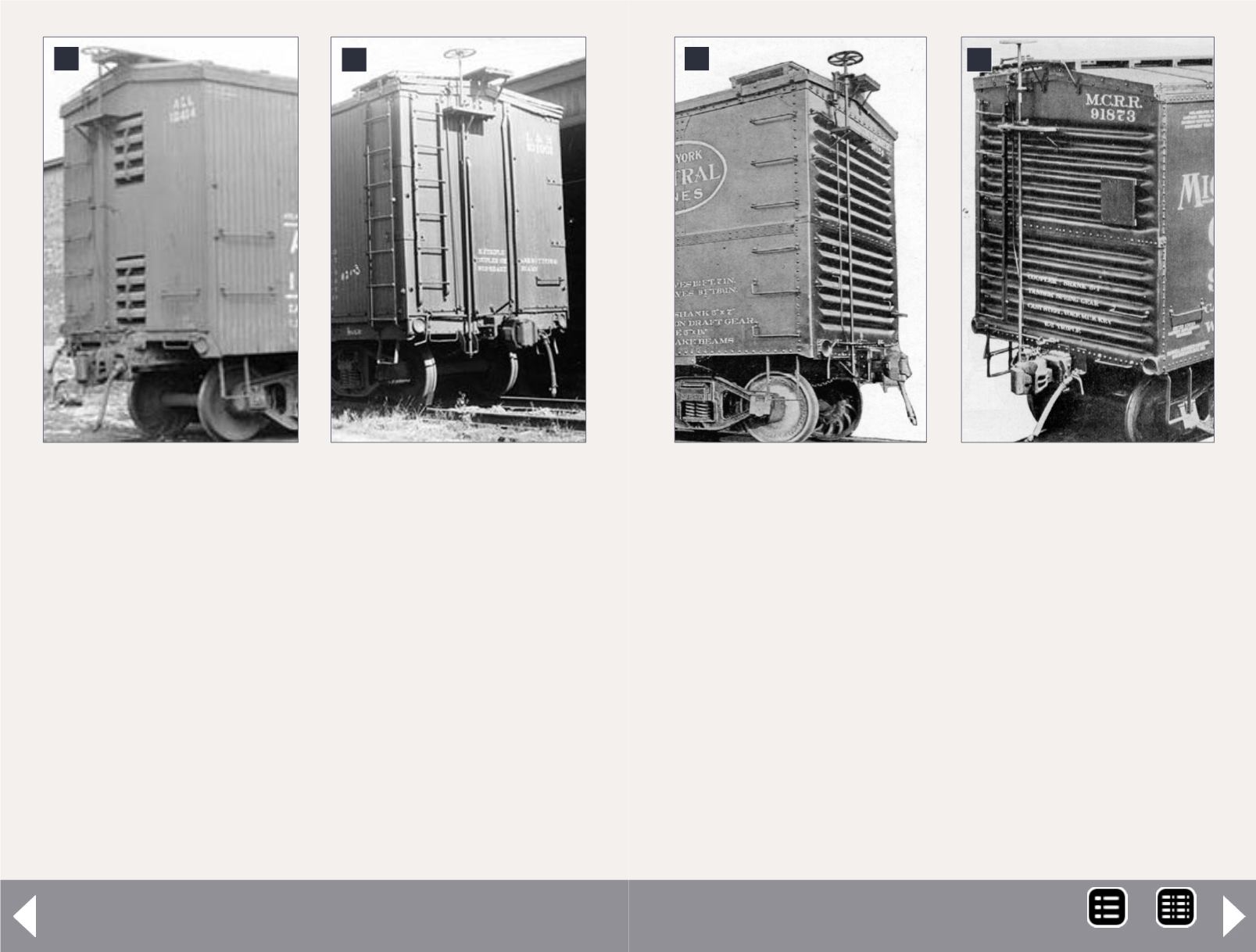
configuration. Internal steel bracing was hidden from view on
cars with double-sheathed wood ends [5]. As the load capac-
ity of boxcars increased there was a greater need for stronger
ends to minimize damage from shifting loads and to protect
the car itself.
Corrugated metal ends
The first widely-accepted stamped steel corrugated car ends
were introduced in 1912 by the Pressed Steel Mfg. Co. [7]. The
company marketed them under the trade name Murphy, and
5. Double-sheathed
car with vents installed
between the vertical steel
end braces.
6. Double-sheathed
wood car with unique
vertical braces.
6
5
Boxcar ends - 3
7. ACF builder’s photo of
36’ steel car built in 1912
with 7-7 Murphy end.
Note lack of end ladder.
8. Car built in 1918 by
Pressed Steel Mfg. Co.
with 6/6 Murphy steel end.
8
7
licensed the design to other manufacturers. Corrugated steel
ends were made in two [8], three [9] or more [13] sections that
were riveted together. Heavier steel was favored for the bottom
section where the impact from shifting loads would be greater.
In 1914 the A.R.A. recommended that one-piece corrugated
steel ends must be not less than ¼”in thickness, and when con-
structed of more than one piece, the lower third of the end
should be ¼” thick, and the remainder should be not less than
3/16” thick. About 1916 the Master Car Builders recommended
that all new boxcars have steel ends.
MRH-Oct 2014


